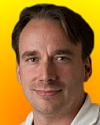
Born 28 Dec 1969. quotes
Finnish computer scientist who initiated and promoted the growth of the Linux computer operating system. While a computer science student, he created his own UNIX-like operating system on his own desktop personal computer (PC) because he was dissatisfied with the way Microsoft MS-DOS performed. By 1991, he had it sufficiently developed to share with the source code with other software developers, to use for free, and they could contribute their own improvements. This is the open-source model of sofware development. Linux, being free to use, is now the operating system of choice for many servers and web sites on the Internet, as well as other devices.«
Finnish computer scientist who initiated and promoted the growth of the Linux computer operating system. While a computer science student, he created his own UNIX-like operating system on his own desktop personal computer (PC) because he was dissatisfied with the way Microsoft MS-DOS performed. By 1991, he had it sufficiently developed to share with the source code with other software developers, to use for free, and they could contribute their own improvements. This is the open-source model of sofware development. Linux, being free to use, is now the operating system of choice for many servers and web sites on the Internet, as well as other devices.«
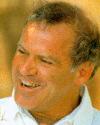
Born 28 Dec 1944. quotes
Kary Banks Mullis is an American biochemist who invented the polymerase chain reaction (PCR) in 1983, for which he shared (with Michael Smith) the 1993 Nobel Prize for Chemistry. The PCR technique is simple, and within a few hours can make billions of copies of a specific stretch of DNA. It is a powerful aid in medical diagnosis of a bacterial or viral infection, able to use a very small sample of genetic material to identify the causative agent. PCR is valuable in genetics, and forensic science. With its use, genetic disorders can be identified from DNA samples. Using minute traces of tissue, PCR can yield sufficient DNA to identify parents and family kin, crime suspects, corpses, anthropological or ancient fossil remains. PCR is also a basic tool in gene sequencing.«
Kary Banks Mullis is an American biochemist who invented the polymerase chain reaction (PCR) in 1983, for which he shared (with Michael Smith) the 1993 Nobel Prize for Chemistry. The PCR technique is simple, and within a few hours can make billions of copies of a specific stretch of DNA. It is a powerful aid in medical diagnosis of a bacterial or viral infection, able to use a very small sample of genetic material to identify the causative agent. PCR is valuable in genetics, and forensic science. With its use, genetic disorders can be identified from DNA samples. Using minute traces of tissue, PCR can yield sufficient DNA to identify parents and family kin, crime suspects, corpses, anthropological or ancient fossil remains. PCR is also a basic tool in gene sequencing.«
The Polymerase Chain Reaction, by Kary B. Mullis, et al. - book suggestion.
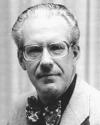
Born 28 Dec 1929. quotes
Dutch-born American astronomer who in 1963 discovered quasars (quasi-stellar objects). The hydrogen spectrum of these starlike objects shows a huge redshift, which indicates they are more distant than normal stars, travelling away at greater speed, and are among the oldest objects observed. In turn, this indicates they existed only when the universe was very young, and provides evidence against the steady state theory of Fred Hoyle. Schmidt is currently seeking to find the redshift above which there are no quasars, and he also studies x-ray and gamma ray sources.«
Dutch-born American astronomer who in 1963 discovered quasars (quasi-stellar objects). The hydrogen spectrum of these starlike objects shows a huge redshift, which indicates they are more distant than normal stars, travelling away at greater speed, and are among the oldest objects observed. In turn, this indicates they existed only when the universe was very young, and provides evidence against the steady state theory of Fred Hoyle. Schmidt is currently seeking to find the redshift above which there are no quasars, and he also studies x-ray and gamma ray sources.«
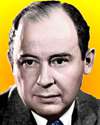
Born 28 Dec 1903; died 8 Feb 1957 at age 53. quotes
Hungarian-American mathematician who made important contributions in quantum physics, logic, meteorology, and computer science. He invented game theory, the branch of mathematics that analyses strategy and is now widely employed for military and economic purposes. During WW II, he studied the implosion method for bringing nuclear fuel to explosion and he participated in the development of the hydrogen bomb. He also set quantum theory upon a rigorous mathematical basis. In computer theory, von Neumann did much of the pioneering work in logical design, in the problem of obtaining reliable answers from a machine with unreliable components, the function of “memory,” and machine imitation of “randomness.”[Image left: Von Neumann with ENIAC computer.]
Hungarian-American mathematician who made important contributions in quantum physics, logic, meteorology, and computer science. He invented game theory, the branch of mathematics that analyses strategy and is now widely employed for military and economic purposes. During WW II, he studied the implosion method for bringing nuclear fuel to explosion and he participated in the development of the hydrogen bomb. He also set quantum theory upon a rigorous mathematical basis. In computer theory, von Neumann did much of the pioneering work in logical design, in the problem of obtaining reliable answers from a machine with unreliable components, the function of “memory,” and machine imitation of “randomness.”[Image left: Von Neumann with ENIAC computer.]
John von Neumann: The Scientific Genius Who Pioneered..., by Norman MacRae. - book suggestion.
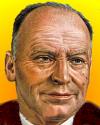
Born 28 Dec 1898; died 19 Aug 1957 at age 58. quotes
Swedish-American meteorologist who first explained the large-scale motions of the atmosphere in terms of fluid mechanics. His work contributed to developing meteorology as a science. Rossby first theorized about the existence of the jet stream in 1939, and that it governs the easterly movement of most weather. U.S. Army Air Corps pilots flying B-29 bombing missions across the Pacific Ocean during World War II proved the jet stream's existence. The pilots found that when they flew from east to west, they experienced slower arrival times and fuel shortage problems. When flying from west to east, however, they found the opposite to be true. Rossby created mathematical models (Rossby equations) for computerized weather prediction (1950).«
Swedish-American meteorologist who first explained the large-scale motions of the atmosphere in terms of fluid mechanics. His work contributed to developing meteorology as a science. Rossby first theorized about the existence of the jet stream in 1939, and that it governs the easterly movement of most weather. U.S. Army Air Corps pilots flying B-29 bombing missions across the Pacific Ocean during World War II proved the jet stream's existence. The pilots found that when they flew from east to west, they experienced slower arrival times and fuel shortage problems. When flying from west to east, however, they found the opposite to be true. Rossby created mathematical models (Rossby equations) for computerized weather prediction (1950).«
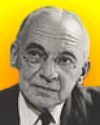
Born 28 Dec 1894; died 5 Nov 1973 at age 78. quotes
U.S. paleontologist who studied the evolution of early vertebrates in biological terms of comparative anatomy and embryology. He researched muscle and limb evolution, the development and evolutionary history of cartilage and bone, and the structure and function of the nervous system. Further, he traced the basic structural and functional changes that took place during the evolution of fishes to primitive terrestrial vertebrates and from these to modern vertebrates. He linked the form and function of animals to their environment. Romer was one of the first vertebrate palaeontologists to defend the idea of continental drift, having found striking similarities between Permian reptiles in western Texas and in Czechoslovakia.«
U.S. paleontologist who studied the evolution of early vertebrates in biological terms of comparative anatomy and embryology. He researched muscle and limb evolution, the development and evolutionary history of cartilage and bone, and the structure and function of the nervous system. Further, he traced the basic structural and functional changes that took place during the evolution of fishes to primitive terrestrial vertebrates and from these to modern vertebrates. He linked the form and function of animals to their environment. Romer was one of the first vertebrate palaeontologists to defend the idea of continental drift, having found striking similarities between Permian reptiles in western Texas and in Czechoslovakia.«
Vertebrate Paleontology, by Alfred Sherwood Romer. - book suggestion.
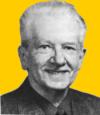
Born 28 Dec 1892; died 10 Oct 1974 at age 81.
Alfred Irving Hallowell was an American anthropologist who was an authority on the Northern Ojibwa Indians. He used tests of perception, and particularly favoured the Rorschach ink blot test to assess individual Ojibwa personalities. Hallowell collected a series of 266 Rorschach records from various Ojibwa communities, and although he never prepared an over-all summary of the results in the form of a sketch of typical Ojibwa personality structures, he used the data in a number of papers. All of Hallowell's field work was undertaken among American Indians. He published many studies of the tribes and made important contributions to culture- and- personality theory. His book Culture and Experience appeared in 1955.«
Alfred Irving Hallowell was an American anthropologist who was an authority on the Northern Ojibwa Indians. He used tests of perception, and particularly favoured the Rorschach ink blot test to assess individual Ojibwa personalities. Hallowell collected a series of 266 Rorschach records from various Ojibwa communities, and although he never prepared an over-all summary of the results in the form of a sketch of typical Ojibwa personality structures, he used the data in a number of papers. All of Hallowell's field work was undertaken among American Indians. He published many studies of the tribes and made important contributions to culture- and- personality theory. His book Culture and Experience appeared in 1955.«
The Ojibwa of Berens River, Manitoba: Ethnography into History, by A. Irving Hallowell, et al. - book suggestion.
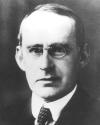
Born 28 Dec 1882; died 22 Nov 1944 at age 61. quotes
English astrophysicist, and mathematician known for his work on the motion, distribution, evolution and structure of stars. He also interpreted Einstein's general theory of relativity. He was one of the first to suggest (1917) conversion of matter into radiation powered the stars. In 1919, he led a solar eclipse expedition which confirmed the predicted bending of starlight by gravity. He developed an equation for radiation pressure. In 1924, he derived an important mass-luminosity relation. He also studied pulsations in Cepheid variables, and the very high densities of white dwarfs. He sought fundamental relationships between the prinicipal physical constants. Eddington wrote many books for the general reader, including Stars and Atoms.«
English astrophysicist, and mathematician known for his work on the motion, distribution, evolution and structure of stars. He also interpreted Einstein's general theory of relativity. He was one of the first to suggest (1917) conversion of matter into radiation powered the stars. In 1919, he led a solar eclipse expedition which confirmed the predicted bending of starlight by gravity. He developed an equation for radiation pressure. In 1924, he derived an important mass-luminosity relation. He also studied pulsations in Cepheid variables, and the very high densities of white dwarfs. He sought fundamental relationships between the prinicipal physical constants. Eddington wrote many books for the general reader, including Stars and Atoms.«
The Eddington Enigma, by David Evans, David S. Evans. - book suggestion.
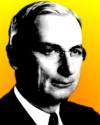
Born 28 Dec 1873; died 7 Mar 1951 at age 77.
American nuclear chemist who was one of the first to investigate the structure and fusion reactions of the nucleus. In 1920, Harkins predicted the existence of the neutron, subsequently discovered by Edwin Chadwick's experiment. He made pioneering studies of nuclear reactions with Wilson cloud chambers. In the early 1930's, (with M.D. Kamen) he built a cyclotron. Harkins demonstrated that in neutron bombardment reactions the first step in neutron capture is the formation of an “excited nucleus” of measurable lifetime, which subsequently splits into fragments. He also suggested that subatomic energy might provide enough energy to power the Sun over its lifetime.«
American nuclear chemist who was one of the first to investigate the structure and fusion reactions of the nucleus. In 1920, Harkins predicted the existence of the neutron, subsequently discovered by Edwin Chadwick's experiment. He made pioneering studies of nuclear reactions with Wilson cloud chambers. In the early 1930's, (with M.D. Kamen) he built a cyclotron. Harkins demonstrated that in neutron bombardment reactions the first step in neutron capture is the formation of an “excited nucleus” of measurable lifetime, which subsequently splits into fragments. He also suggested that subatomic energy might provide enough energy to power the Sun over its lifetime.«
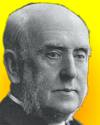
Born 28 Dec 1835; died 10 Nov 1924 at age 88. quotes
Scottish geologist who assisted Murchison on the geological survey of Scotland, made original studies of the effects of glaciation in Scotland (1863), and became director (1867) of the new branch of the Geological Survey for Scotland. In 1881, he became director-general of the Geological Survey of the United Kingdom. Geikie prepared a geological map of Scotland (1892). He advocated microscopic petrography. Geikie travelled throughout Europe and in western America. He found the canyons of the Colorado confirmed his long-standing fluvial theory of erosion. He also gained experience in volcanic geology. Among other books and texts, he published The Ancient Volcanoes of Great Britain (1897).«
Scottish geologist who assisted Murchison on the geological survey of Scotland, made original studies of the effects of glaciation in Scotland (1863), and became director (1867) of the new branch of the Geological Survey for Scotland. In 1881, he became director-general of the Geological Survey of the United Kingdom. Geikie prepared a geological map of Scotland (1892). He advocated microscopic petrography. Geikie travelled throughout Europe and in western America. He found the canyons of the Colorado confirmed his long-standing fluvial theory of erosion. He also gained experience in volcanic geology. Among other books and texts, he published The Ancient Volcanoes of Great Britain (1897).«
Landscape in history, and other essays, by Archibald Geikie. - book suggestion.
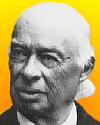
Born 28 Dec 1818; died 11 Jun 1897 at age 78. quotes
German analytical chemist who devised a method for systematic identification and separation of individual metal and non-metal ions, selecting the most suitable reactions from the many that were known. The book he wrote expounding this system (Anleitung zur qualitativen chemischen Analyse, 1941) enjoyed great success. As it was the first to address this need, it became an enduring textbook. He followed this with a book on quantitative analysis (1846). Aged only 29, he founded the first chemical analysis and teaching laboratory, the Fresnius Training and Research Institute, in Wiesbaden, Germany. He founded the Zeitschrift für Analytische Chemie (Journal of Analytical Chemistry, 1862) which he edited until his death.«
German analytical chemist who devised a method for systematic identification and separation of individual metal and non-metal ions, selecting the most suitable reactions from the many that were known. The book he wrote expounding this system (Anleitung zur qualitativen chemischen Analyse, 1941) enjoyed great success. As it was the first to address this need, it became an enduring textbook. He followed this with a book on quantitative analysis (1846). Aged only 29, he founded the first chemical analysis and teaching laboratory, the Fresnius Training and Research Institute, in Wiesbaden, Germany. He founded the Zeitschrift für Analytische Chemie (Journal of Analytical Chemistry, 1862) which he edited until his death.«
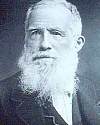
Born 28 Dec 1814; died 31 Aug 1900 at age 85.
(1st Baronet) English agronomist who initiated the artificial fertiliser industry and founded the world's first agricultural research station. While a young man, he studied how manures improved growth of potted plants and crops. In 1842, having patented a method to make superphosphate by treating phosphate rock with sulphuric acid, he started the first artificial fertiliser factory. In 1843, Lawes opened the Rothamsted Experimental Station where he began a 57-yr collaboration with chemist Joseph Henry Gilbert. They developed modern scientific agriculture, researching animal nutrition with different fodders, and the effect on crop yields of inorganic and organic fertilisers. Some of their long-term field experiments continue to this day.«
(1st Baronet) English agronomist who initiated the artificial fertiliser industry and founded the world's first agricultural research station. While a young man, he studied how manures improved growth of potted plants and crops. In 1842, having patented a method to make superphosphate by treating phosphate rock with sulphuric acid, he started the first artificial fertiliser factory. In 1843, Lawes opened the Rothamsted Experimental Station where he began a 57-yr collaboration with chemist Joseph Henry Gilbert. They developed modern scientific agriculture, researching animal nutrition with different fodders, and the effect on crop yields of inorganic and organic fertilisers. Some of their long-term field experiments continue to this day.«
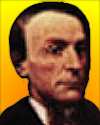
Born 28 Dec 1809; died 12 Apr 1870 at age 60.
American physician who performed the first U.S. gallstone operation in Indianapolis, Indiana, becoming known as "the father of cholecystotomy". The surgery was reported, 19-20 May 1868, to the Indiana State Medical Society of which he was president of the surgery section. Bobbs was a commissioner of the state's first hospital, the Indiana Hospital for the Insane. He was the state's first and most vocal advocate for a medical school, and he was founded the Indiana Medical college in 1869 (which was incorporated into the Indiana University School of Medicine in 1908). Earlier, he had served as state senator (1856-60). He was a civilian brigade surgeon during the Civil War.«
American physician who performed the first U.S. gallstone operation in Indianapolis, Indiana, becoming known as "the father of cholecystotomy". The surgery was reported, 19-20 May 1868, to the Indiana State Medical Society of which he was president of the surgery section. Bobbs was a commissioner of the state's first hospital, the Indiana Hospital for the Insane. He was the state's first and most vocal advocate for a medical school, and he was founded the Indiana Medical college in 1869 (which was incorporated into the Indiana University School of Medicine in 1908). Earlier, he had served as state senator (1856-60). He was a civilian brigade surgeon during the Civil War.«
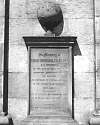
Born 28 Dec 1798; died 23 Nov 1844 at age 45.
Scottish astronomer, the first Scottish Astronomer Royal (1834), who was first to measure the parallax of a star (Alpha Centauri, observed at the Cape of Good Hope) in 1831-33, but delayed publication of his results until Jan 1839. By then, a few months earlier, both Friedrich Bessel and Friedrich Struve had been recognized as first for their measurements of stellar parallaxes. Alpha Centauri can be observed from the Cape, though not from Britain. It is now known to be the nearest star to the Sun, but is still so distant that its light takes 4.5 years to reach us. As Scottish Astronomer Royal in 1834, he worked diligently at the Edinburgh observatory for ten years, making over 60,000 observations of star positions before his death in 1844.«[Image: Memorial tablet at the City Observatory, Edinburgh. No proper portrait of him exists]
Scottish astronomer, the first Scottish Astronomer Royal (1834), who was first to measure the parallax of a star (Alpha Centauri, observed at the Cape of Good Hope) in 1831-33, but delayed publication of his results until Jan 1839. By then, a few months earlier, both Friedrich Bessel and Friedrich Struve had been recognized as first for their measurements of stellar parallaxes. Alpha Centauri can be observed from the Cape, though not from Britain. It is now known to be the nearest star to the Sun, but is still so distant that its light takes 4.5 years to reach us. As Scottish Astronomer Royal in 1834, he worked diligently at the Edinburgh observatory for ten years, making over 60,000 observations of star positions before his death in 1844.«[Image: Memorial tablet at the City Observatory, Edinburgh. No proper portrait of him exists]
Parallax: The Race to Measure the Cosmos, by Alan W. Hirshfeld. - book suggestion.
Born 28 Dec 1782; died Jul 1818.
English botanist who discovered the largest flower known while travelling as a naturalist to Sir Stamford Raffles. The Rafflesia arnoldi has neither leaves or branches, but the flower is a yard across. Its petals are one foot long and its nectarium contains 12 pints.«
English botanist who discovered the largest flower known while travelling as a naturalist to Sir Stamford Raffles. The Rafflesia arnoldi has neither leaves or branches, but the flower is a yard across. Its petals are one foot long and its nectarium contains 12 pints.«
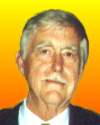
Buried 28 Dec 2013 at age 86 (born 21 Mar 1927). quotes
American astronomer noted for challenging the theory that red shifts of quasars indicate their great distance. Arp is one of the key actors in the contemporary debate on the origin and evolution of galaxies in the universe. His landmark compilation of peculiar galaxies led him to challenge the fundamental assumption of modern cosmology, that redshift is a uniform indicator of distance. Astronomers have debated Arp's assertion that quasars are related to peculiar galaxies since the late 1960s. Most astronomers believe that quasars are unrelated to the peculiar galaxies. Yet, no one has been able to explain why the quasars seem to be more numerous around the peculiar galaxies.
American astronomer noted for challenging the theory that red shifts of quasars indicate their great distance. Arp is one of the key actors in the contemporary debate on the origin and evolution of galaxies in the universe. His landmark compilation of peculiar galaxies led him to challenge the fundamental assumption of modern cosmology, that redshift is a uniform indicator of distance. Astronomers have debated Arp's assertion that quasars are related to peculiar galaxies since the late 1960s. Most astronomers believe that quasars are unrelated to the peculiar galaxies. Yet, no one has been able to explain why the quasars seem to be more numerous around the peculiar galaxies.
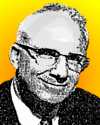
Died 28 Dec 1997 at age 89 (born 5 Dec 1908).
American plant pathologist who was an expert on the diseases of roses. He lived in Tyler, Texas, and greatly assisted the city's rose-growing industry. His interest stretched over 50 years; his doctorate dissertation in 1937 was his first study on the control of black spot disease. He found that the chief source of black spot spores is from lesions on the canes, and not the black-spotted leaflets. When spraying for black spot, he found it was important to wet all the woody parts of the plant on a weekly basis. Affected leaflets, when left in place, in fact contributed to the food production of the rose plant. He also helped breed various rose varieties, investigated hybrids, genetic composition, cultural adaptation and the best use of fertilizers.«
American plant pathologist who was an expert on the diseases of roses. He lived in Tyler, Texas, and greatly assisted the city's rose-growing industry. His interest stretched over 50 years; his doctorate dissertation in 1937 was his first study on the control of black spot disease. He found that the chief source of black spot spores is from lesions on the canes, and not the black-spotted leaflets. When spraying for black spot, he found it was important to wet all the woody parts of the plant on a weekly basis. Affected leaflets, when left in place, in fact contributed to the food production of the rose plant. He also helped breed various rose varieties, investigated hybrids, genetic composition, cultural adaptation and the best use of fertilizers.«
Died 28 Dec 1927 at age 80 (born 17 Jun 1847).
American physicist.
American physicist.
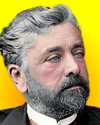
Died 28 Dec 1923 at age 91 (born 15 Dec 1832). quotes
French civil engineer who specialized in metal structures, known especially for the Eiffel Tower in Paris. He built his first of his iron bridges at Bordeaux (1858) and was among the first engineers to build bridge foundations using compressed-air caissons. His work includes designing the rotatable dome for Nice Observatory on the summit of Mont Gros (1886), and the frameworkfor the Statue of Liberty now in New York Harbour. After building the Eiffel Tower (1887-9), which he used for scientific research on meteorology, aerodynamics and radio telegraphy, he also built the first aerodynamic laboratory at Auteuil, outside Paris, where he pursued his research work without interruption during WW I.«
French civil engineer who specialized in metal structures, known especially for the Eiffel Tower in Paris. He built his first of his iron bridges at Bordeaux (1858) and was among the first engineers to build bridge foundations using compressed-air caissons. His work includes designing the rotatable dome for Nice Observatory on the summit of Mont Gros (1886), and the frameworkfor the Statue of Liberty now in New York Harbour. After building the Eiffel Tower (1887-9), which he used for scientific research on meteorology, aerodynamics and radio telegraphy, he also built the first aerodynamic laboratory at Auteuil, outside Paris, where he pursued his research work without interruption during WW I.«
Eiffel: The Genius Who Reinvented Himself, by David I. Harvie. - book suggestion.
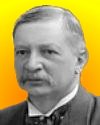
Died 28 Dec 1919 at age 65 (born 8 Nov 1854).
Swedish physicist, known for the Rydberg constant in his empirical formula that related the wave numbers of the spectral lines of an element (1890). This formula expressed fundamental relationships in those lines, which he presumed were the result of the inner nature and structure of an element's atoms. In 1897, he suggested that an atomic number for each of the elements, rather than atomic weights, would be a better means for organizing the elements and their periodicity of their characteristics. His work did provided the basis for discovering the electron shell structure of the atom. It was later established that the integer number of positive charges on an element's nucleus (its number of protons) corresponded to his idea of atomic number.«
Swedish physicist, known for the Rydberg constant in his empirical formula that related the wave numbers of the spectral lines of an element (1890). This formula expressed fundamental relationships in those lines, which he presumed were the result of the inner nature and structure of an element's atoms. In 1897, he suggested that an atomic number for each of the elements, rather than atomic weights, would be a better means for organizing the elements and their periodicity of their characteristics. His work did provided the basis for discovering the electron shell structure of the atom. It was later established that the integer number of positive charges on an element's nucleus (its number of protons) corresponded to his idea of atomic number.«
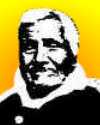
Died 28 Dec 1896 at age 79 (born 3 May 1817).
Horatio (Emmons) Hale was an American anthropologist whose contributions to the science of ethnology, included his theory of the origin of the diversities of human languages and dialectsa theory suggested by his study of childlanguages (the languages invented by little children). He emphasized the importance of languages as tests of mental capacity and as criteria for the classification of human groups. Hale was the first to discover that the Tutelos of Virginia belonged to the Siouan family, and to identify the Cherokee as a member of the Iroquoian family of speech. He sailed with the scientific corps of the Wilkes Exploring Expedition (1838-42) collecting linguistic materials. He used the drift of the Polynesian tongue as a clue to the migration of this race.«
Horatio (Emmons) Hale was an American anthropologist whose contributions to the science of ethnology, included his theory of the origin of the diversities of human languages and dialectsa theory suggested by his study of childlanguages (the languages invented by little children). He emphasized the importance of languages as tests of mental capacity and as criteria for the classification of human groups. Hale was the first to discover that the Tutelos of Virginia belonged to the Siouan family, and to identify the Cherokee as a member of the Iroquoian family of speech. He sailed with the scientific corps of the Wilkes Exploring Expedition (1838-42) collecting linguistic materials. He used the drift of the Polynesian tongue as a clue to the migration of this race.«
The Iroquois Book of Rites, by Horatio Hale. - book suggestion.
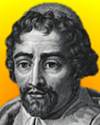
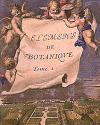
French botanist and physician, whose pioneering systematic approach to botany included creating a system of plant classification that used the "genus" in the modern sense. On scientific expeditions, he collected many plant species from Greece, Asia Minor, and the Pyrenees. In Élémens de botanique (1694), he arranged the petal-bearing plants into classes based on the form of the corolla, then into families based on the position of the corolla, and finally into genera as defined by the character of the fruit and seed. His system was used through the 18th century, elaborated by others such as Linnæus, but superceded as research advanced. Tournefort did not use a microscope and did no research on plant structure, function or reproduction.«[Image right: (source)]
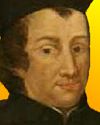
Died 28 Dec 1663 at age 45 (born 2 Apr 1618). quotes
Italian physicist and mathematician who studied the diffraction of light. He observed the image on a screen in a darkened room of a tiny beam of sunlight after it passed pass through a fine screen (or a slit, edge of a screen, wire, hair, fabric or bird feather). The image had iridescent fringes, and deviated from a normal geometrical shadow. He coined the name diffraction for this change of trajectory of the light passing near opaque objects (though, more specifically, it may have been interferences with two close sources that he observed). This provided evidence for later physicists to support the wave theory of light. With Riccioli, he investigated the object in free fall (1640-50), and found that distance of fall was proportional to the square of the time taken.« more
Italian physicist and mathematician who studied the diffraction of light. He observed the image on a screen in a darkened room of a tiny beam of sunlight after it passed pass through a fine screen (or a slit, edge of a screen, wire, hair, fabric or bird feather). The image had iridescent fringes, and deviated from a normal geometrical shadow. He coined the name diffraction for this change of trajectory of the light passing near opaque objects (though, more specifically, it may have been interferences with two close sources that he observed). This provided evidence for later physicists to support the wave theory of light. With Riccioli, he investigated the object in free fall (1640-50), and found that distance of fall was proportional to the square of the time taken.« more
In 2005, the first in a network of satellites, named Galileo, was launched by a consortium of European goverments and companies. It was expected that by 2011, Galileo was to consist of 30 satellites providing worldwide coverage as an alternative to the U.S. monopoly with its Global Positioning System (GPS). At a cost of $4 billion, it was Europe's biggest-ever space project, with one-third contributed by governments and the balance from eight companies. Since the American GPS is controlled by the military, the European satellite network is designed to ensure independance for civilian use, but also offer more precision for a paid service. Customers are expected to include service for small airports, transportation, and mobile phone manufacturers to build in navigation capabilities.«
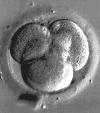
4-cell embryo
In 1981, the first American “test tube” baby conceived through in vitro fertilization was born on this morning, a 5-lb 12-oz girl, at Norfolk General Hospital. The term “in vitro” is Latin for “in glass,” because conception takes place in a laboratory dish. The U.S. procedure was performed by the Howard and Georgeanna Jones Institute for Reproductive Medicine, which now draws patients from around the world with its advanced and comprehensive treatment of reproductive disorders, male and female. In vitro fertilization was a medical breakthrough because it helped doctors overcome intractable problems with a woman's fallopian tubes or a man's sperm count. The world's first “test-tube” baby, Louise Brown, was born in England, on 25 Jul 1978.
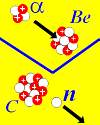

Joliot-Curie
In 1904, the first weather reports relayed by wireless telegraphy were published in London.*
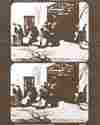
In 1895, the brothers Auguste and Louis Lumière presented their motion-picture films in their first public performance, at the Salon Indien of the Grand Café, 14 Boulevard des Capucines in Paris. An earlier private first screening on 22 Mar 1895 showed their first film, La Sortie des ouvriers de l'usine Lumière. This film was shot specially for the occasion. It shows workers leaving the Lumières' own factory in Lyon, which made all kinds of photographic products. The workers streamed out, most on foot, some on bicycles, followed by those with cars.«
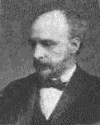
In 1893, Professor James Dewar gave six well-illustrated lectures on “Air gaseous and liquid,” at the Royal Institution, London, between this day and 9 Jan 1894. Some of the air in the room was liquified in the presence of the audience and it remained so for some time, when enclosed in a vacuum jacket. Again, 1 Apr 1898.[* p.30]

(USPTO)
In 1886, the first U.S. patent for a commercially successful dishwasher was issued to Josephine Garis Cochrane (No. 355,139). Developed over a number of years, aher hand-operated machine provided "a continuous stream of either soap-suds or clear hot water" which was "supplied to a crate holding the racks or cages containing the dishes while the crate is rotated so as to bring the greater portion thereof under the action of the water." The company she founded to market the dishwasher to hotels and restaurants was purchased in the 1920's by the Hobart Corporation. They introduced the "KitchenAid" brand name that is known today (1949). The first U.S. patent for a dishwasher was issued 14 May 1850 to Joel Houghton. «
more
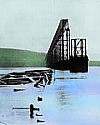
In 1879, at about 7:15 pm, as a train crossed the Tay Bridge during a gale, the central navigation spans collapsed. The locomotive and six carriages of pasengers fell into the Firth of Tay at Dundee, killing over 80 people, with no survivors. The Tay bridge, then the longest bridge in the world, had 85 spans and was nearly 2 miles long. The collapse of the bridge, opened only 19 months before, shocked the Victorian engineering profession and general public. The Court of Inquiry concluded that inadequate design and construction led to insufficient cross bracing to withstand the gale force winds. The designer, Sir Thomas Bouch, died only ten months after the disaster. To date, it remains the worst structural engineering failure in the British Isles.«[Image: collapsed span in water beside broken columns after the collapse of the Tay Bridge.]
Beautiful Railway Bridge of the Silvery Tay: Reinvestigating the Tay Bridge Disaster, by Peter R. Lewis. - book suggestion.
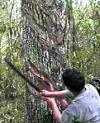
Collecting chicle sap
In 1869, William Finley Semple of Mount Vernon, Ohio, was issued the first U.S. patent for chewing gum (No. 98,304), made of "the combination of rubber with other articles adapted to the formation of an acceptable chewing gum", but he never commercially produced gum. That was done by Thomas Adams of Staten Island, N.Y., who knew that chicle could be chewed. His first experiments to vulcanize chicle for use as a rubber substitute were unsuccessful until he boiled a small batch of chicle in his kitchen and created the first chicle-based chewing gum. Testing sales at a local store, he found people liked his gum. In 1871, Adams patented a gum-producing machine so he could increase production.
more
Great American Chewing Gum Book, by Robert Hendrickson. - book suggestion.
In 1849, it is said that dry-cleaning was accidentally discovered when M. Jolly-Bellin, a tailor, upset a lamp containing turpentine oil on his tablecloth and noticed it had a cleaning effect. He opened the very first dry cleaning shop called "Teinturerie Jolly Bellin" on rue Saint Martin in Paris in 1825. Another story says that by accident the owner of a textile dye works in 1848 found that the liquid from an oil lamp could dissolve fat. While different stories reportedly tell of its origin, one thing in common is that fabric was accidentally saturated with a volatile liquid and, by surprise, the material appeared clean after it dried. One such tale tells about a French sailor who accidentally fell into a vat of turpentine and when his soiled uniform dried, it was clean.




